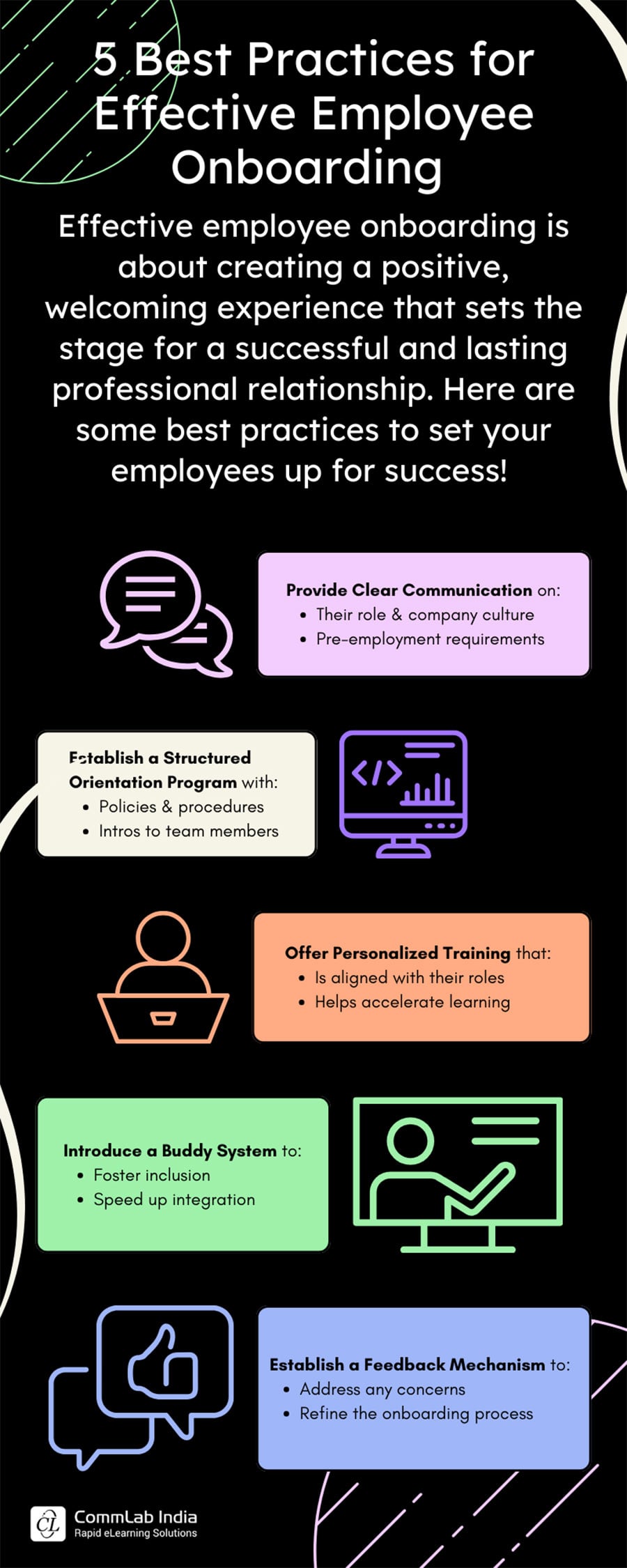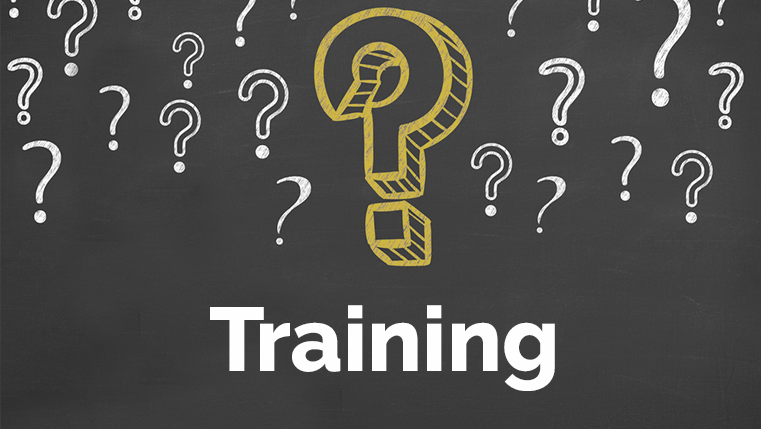Onboarding Training— Impressive Benefits You Can't Ignore!

Employee training and development are the cornerstones of a thriving organization. And when it comes to setting the tone for success, delivering an effective onboarding training program should top the priority list. A well-crafted induction experience, as part of a comprehensive corporate training strategy, not only equips new hires with the skills and knowledge they need but also lays the foundation for long-term engagement and organizational growth.
→ Download Template: Align Training with Business Goals for Max Impact and ROI
Table of content
- What is Employee Onboarding?
- Why is Effective Employee Onboarding Growing in Relevance?
- What are the Benefits of Employee Onboarding?
- How Does Onboarding Training Impact Employee Retention?
- How to Make Employee Onboarding Training Effective?
- What Are the Best Practices for Effective Employee Onboarding?
What is Employee Onboarding?
Employee onboarding is the process of integrating a new employee into an organization, aimed at helping them understand and adjust to their job roles and company culture. This process typically involves introducing them to the organization's policies, procedures, and expectations, as well as providing the necessary resources and training to perform their job effectively.
Successful onboarding helps new hires quickly become productive and feel like valued members of their team, ultimately contributing to higher job satisfaction and retention rates.
Why is Effective Employee Onboarding Growing in Relevance?
Effective employee onboarding is gaining traction as a critical business initiative more than ever to support organizational success in today's competitive job market. With industries facing rapid technological advancements and shifting work cultures, companies must ensure new employees are well-prepared and aligned with their roles from the onset. Induction programs go beyond simple orientation, they help new hires acclimate to the company's environment, culture, and ethos, laying a foundation for their employee training and development initiatives. As businesses strive to attract and retain top talent, effective corporate induction emerges as a strategic tool to enhance employee satisfaction and decrease turnover rates.

What are the Benefits of Employee Onboarding?
Benefits of effective induction training to the organization:
1. Saves a lot of money and time
Induction training is the first training program in which the employee participates after he joins the organization. Induction training provides him all the information needed to start performing his duties. If an employee is trained well in the induction program, he can easily adapt to his new role and start delivering results quickly – that’s how it saves the organization a lot of money and time.
Understanding with an Example: When Sarah joined the company, she went through a comprehensive induction training. She received all the necessary information about her role and the company's procedures. Within a week, Sarah was confidently managing her tasks without needing constant supervision, thereby saving the organization both time and money by quickly becoming a productive team member.
2. Reduces employee turnover
People join a company with a lot of expectations, and at the same time, they have lot of questions about the organization. All these queries must be answered in the induction training. Ineffective induction training leaves new employee confused about the job. Employees may feel frustrated and helpless, if they are not trained properly. On the other hand, effective induction training goes a long way in increasing staff retention rate and reducing employee turnover in a big way.
Understanding with an Example: Mark joined the company with many questions about his job expectations and the company culture. The induction training program provided him with clear answers and set proper expectations. As a result, he felt valued and understood, which led to his long-term commitment to the company, reducing turnover overall.
3. Ensures operational efficiency
A good induction training program covers all aspects of the company thoroughly. It helps new hires become familiar with the organization’s work culture, vision, mission, and goals. At the same time, new employees understand their own role in achieving the goals of the company. This will help enhance the efficiency of employees quickly, as they adjust to the work culture of the organization and get involved in their job. Overall, it greatly helps increase the operational efficiency of the organization.
Understanding with an Example: During her induction training, Emily learned about the company's vision and her role in achieving its goals. With this understanding, she was able to align her work with the company's objectives and collaborate effectively with her team. This alignment helped her integrate smoothly into the company, contributing to higher operational efficiency.

Align Training with Business Goals
Editable Questionnaire to Help You Make the Right Choice!
- Identify organizational goals
- Check what your people need to do achieve those goals
- Identify SMART learning objectives to fill performance gaps
- Design for impact
Benefits of effective induction training to the employees:
1. Makes the new hire feel respected and valued
Good induction training gives a warm welcome to the employee and focuses on clarifying all his doubts about the organization and his job. It ensures that the new employee feels comfortable in the organization. It also makes him feel that he is welcomed, respected, and valued. This motivates the new employee greatly.
Understanding with an Example: During her first week, Jane's company organized a welcome lunch where she met her team, and her manager took the time to introduce her to the company's values and mission. This made Jane feel appreciated and motivated from the start.
2. Provides the necessary information
A comprehensive induction training program helps the new hire get all the necessary information about the company and clarifies the organization’s expectations on him. This helps him understand the culture, work norms, policies and procedures of the organization, and thus enables him to quickly adapt to the work environment.
Understanding with an Example: In his onboarding session, Tom received a detailed handbook outlining company policies, the organizational chart, and guidelines for his role. This helped Tom quickly understand the company's culture and adapt to his new job.
3. Helps in establishing good communication
Induction training helps the new hires in establishing good communication with the organization. As part of the induction training program, the new employee is introduced to his direct supervisor, other employees, leads, and directors of the organization. This makes him more comfortable when he has to communicate with them later.
Understanding with an Example: During induction, Sam was introduced to key colleagues, including his direct supervisor and team leads. This initial introduction paved the way for open communication and collaboration, making Sam feel more confident in reaching out when needed.
How Does Onboarding Training Impact Employee Retention?
According to Gartner, employees who feel committed to their new roles are 57% more likely to work harder and are nine times less likely to leave.
Onboarding is more than just a first-day formality—it’s the foundation for long-term employee engagement and retention. When done right, onboarding sets the tone for a new hire’s experience by aligning them with the company culture, expectations, and goals. Employees who feel welcomed and equipped from the start are more likely to stay invested in their roles. It’s not just about ticking off HR checkboxes; it’s about creating a seamless transition that makes employees feel valued and supported from day one.
On the flip side, a poorly executed onboarding process can leave new hires feeling disconnected or overwhelmed. Without clear guidance and meaningful engagement, employees may question their fit within the organization, leading to higher turnover rates. This is especially critical in today’s competitive talent landscape, where retaining top performers is a business priority. Organizations that prioritize a structured, personalized onboarding experience not only reduce turnover but also build a loyal workforce that’s more productive and committed to the company’s success.
How to Make Employee Onboarding Training Effective — Winning Tips
Start Before Day One
The onboarding process doesn’t have to wait until the first day. Preparing new hires in advance sets a positive tone and builds excitement about joining your organization. This can include sending a personalized welcome email, sharing a detailed agenda for the first week, or providing access to an onboarding portal with pre-boarding resources like company policies, team introductions, or even a fun video from their future colleagues. This proactive approach reduces first-day overwhelm and allows new employees to feel prepared and valued right away.
Customize the Experience
Every role and department has unique requirements, and personalizing onboarding content ensures relevance and impact. For instance, a sales team member might benefit from role-specific product demos and customer interaction scenarios, while a developer might need deeper insights into tech stacks and coding guidelines. By creating personalized learning paths and leveraging corporate training materials, you make the onboarding experience meaningful and help new hires quickly align with their specific responsibilities and expectations. Personalization also signals that the organization recognizes and supports individual needs.
Blend Learning Approaches
People learn in different ways, so a multi-faceted approach to onboarding can maximize effectiveness. Combine interactive eLearning modules for self-paced learning, microlearning modules for quick bite-sized learning, instructor-led sessions for complex topics, and videos for quick introductions to key processes or culture insights. Gamified learning can also engage employees while reinforcing essential knowledge. Blending formats help maintain interest, prevent information overload, and ensures that critical topics are retained.
Learn how blended learning can do wonders for your corporate induction training for new hires.
Assign a Mentor or Buddy
Having a mentor or buddy can be a game-changer for new employees. A mentor can provide professional guidance and context, while a buddy serves as a friendly peer to help navigate day-to-day challenges. These relationships foster a sense of belonging, making new hires more comfortable and confident as they acclimate. A mentor or buddy can also provide informal insights into company culture, team dynamics, and unspoken norms, helping the new hire settle in faster.
Set Clear Milestones
Onboarding isn’t a one-day event—it’s a journey. Structuring the process into phases, such as 30, 60, and 90 days, provides clarity on what success looks like at each stage. For example, in the first 30 days, focus on building familiarity with the team and systems; by 60 days, encourage employees to take on meaningful projects. Regular check-ins with managers during these phases ensure alignment, give new hires opportunities to ask questions, and address any concerns promptly.
Focus on Culture and Connection
Beyond teaching employees ‘what’ they need to do, emphasize ‘why’ it matters. Introduce them to the company’s mission, vision, and values to help them understand the bigger picture. Facilitate informal team-building activities like lunch with colleagues, virtual coffee chats, or participation in cultural initiatives. Building these connections early fosters loyalty and helps employees see themselves as integral parts of the organization, increasing both satisfaction and retention.

Use Feedback for Improvement
Onboarding should be a dynamic process that evolves with employee needs. Collect feedback through surveys or one-on-one conversations to understand what worked well and what could be improved. For instance, if multiple new hires mention that certain topics were unclear or that they felt isolated in the first few weeks, those areas can be enhanced. Acting on feedback not only improves the onboarding training but also demonstrates that the organization values employee input.

Align Training with Business Goals
Editable Questionnaire to Help You Make the Right Choice!
- Identify organizational goals
- Check what your people need to do achieve those goals
- Identify SMART learning objectives to fill performance gaps
- Design for impact
What Are the Best Practices for Effective Employee Onboarding?
Designing onboarding training doesn’t just cover the basics like paperwork and orientation—it’s an opportunity to set the stage for long-term success, engagement, and retention. It’s where new employees get their first real sense of the company’s culture, their role within the team, and the tools they need to thrive.
Want to make your onboarding process truly impactful? We’ve pulled together the best practices for effective employee onboarding into a visually engaging infographic. Whether you’re looking to revamp your current approach or start from scratch, these tips will help you create an onboarding experience that new hires will remember for all the right reasons. Check it out below!
Concluding Thoughts!
By investing in a thoughtful and well-structured induction process, companies can create a welcoming environment that drives engagement, accelerates productivity, and builds long-term loyalty. Coupled with corporate leadership training, this approach ensures employees feel valued and prepared, setting the stage for success from day one. Ultimately, great onboarding is the first step toward a thriving workplace where both people and businesses can grow together.
Ready to revolutionize your employee training and development initiatives? Here’s a template, specifically designed for Aligning Training to Business Goals, is your ultimate tool to ensure your training initiatives are contributing effectively to your business objectives.
Gain instant access to a highly structured and efficient process to align your training programs with your business strategy. It helps to uniquely identify your organization’s specific goals and training needs. With a step-by-step alignment framework and comprehensive performance metrics guidelines, our template ensures your training programs are finely tuned with your strategic goals.
Use it to align, track, and measure the success rate of your training programs in terms of their impact on your business performance.






